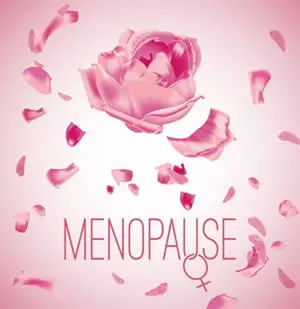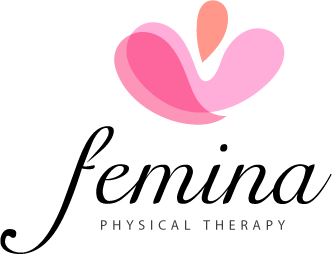
The Femina Physical Therapy Blog
Featuring original articles by our staff about current events and trends
Explore our insightful blog articles on pelvic health, where we delve into essential topics that empower and educate. From understanding pelvic floor disorders to strategies for conquering infertility, our content is designed for those seeking knowledge and support. We discuss the latest research, expert advice, and practical tips to enhance your well-being and foster a deeper connection to your body.
Featured From the Blog:
Vulvovaginal Moisturizers: Who Needs One & Choosing the Right One

Choosing the Right Vulvovaginal Moisturizer
Assuming you need one, make sure it's got the right ingredient list
There are many reasons why those born with female anatomy may require the use of a vulvovaginal moisturizer throughout their lifetime. As you age, the vaginal and vulvar tissues tend to become drier and less elastic. This change is typically seen around the time one goes through menopause due to the drop in estrogen that occurs. The vulvovaginal tissues are very sensitive to hormonal changes and estrogen is the hormone that controls vaginal lubrication, as well as tissue elasticity and thickness.
Read more: Vulvovaginal Moisturizers: Who Needs One & Choosing the...
Postpartum Sexuality & Mood Changes in Women with Pelvic Girdle Pain

Does my pelvic girdle pain have anything to do with my mood and sexuality?
Many of our patients experience sexual dysfunction and anxiety, depression and chronic pain. These conditions are known to coexist, and we unpack each component of pain, mood and one’s behaviors, desires and attitudes related to sex and physical intimacy.
Pelvic girdle pain is defined as “pain between the posterior iliac crests and gluteal folds particularly in the vicinity of the sacroiliac joint” (Simonds). More simply stated: in the very low area of your back and buttock. Pelvic girdle pain is common postpartum and may impact disability in the fourth trimester. Many are aware of peripartum symptoms such as low back pain, incontinence, pelvic organ prolapse, pain with intercourse, and postpartum depression. Knowing that many women experience pain during and after pregnancy - what can we learn about the effects of pelvic girdle pain? Specifically, what impact does pelvic girdle pain have on symptoms of mood and sexuality?
Read more: Postpartum Sexuality & Mood Changes in Women with Pelvic...
Understanding Relaxin: Why It Doesn’t Cause Pain in Pregnancy

Pregnancy is a time of significant physical and hormonal changes, and among the many hormones involved, Relaxin plays a crucial role. However, there’s a common misconception that Relaxin is responsible for pain during pregnancy. Let’s take a closer look at what Relaxin does and why it doesn’t directly cause pain.
What is Relaxin?
Relaxin is a regulatory hormone involved in growth, metabolism, and tissue remodeling after an injury to our bones, ligaments, muscles or tendons (Dehghan 2014). During pregnancy, Relaxin levels begin to increase in the first trimester to help the body prepare for childbirth by relaxing the ligaments in the pelvis and softening the cervix (Aldabe 2012, Daneau 2014). The ligaments of the pelvis will begin to relax around the 10th-12th week of pregnancy (Aldabe 2012). This process allows for greater flexibility in the pelvic area, facilitating delivery and accommodating the growing baby.
Read more: Understanding Relaxin: Why It Doesn’t Cause Pain in...
- Details
- Written by: Heather Jeffcoat, DPT
- 5265 Views

The History of Estrogen Therapy - A Cure for Hot Flashes, Insomnia, Vaginal Discomfort and More?
Hello, menopause! If you’re experiencing any of those symptoms, your doctor may have recommended some form of menopausal hormone therapy.
But is it safe?
When should you start?
And which therapy is right for you?
Researchers have been trying to answer those questions for decades, often with confusing and even conflicting results. Let’s take a look at the history of estrogen therapy, and how past studies are informing the latest recommendations.
A French physician coined the word ‘menopause’ in the 1800s and advanced the revolutionary idea that the health concerns of aging women deserved medical attention. Throughout that century, doctors experimented – sometimes on themselves – with various animal hormones. The science was far from perfected; but by the 1890s, women were being treated successfully for symptoms of menopause with a powder or pill made from cow ovaries.
- Details
- Written by: Heather Jeffcoat, DPT
- 11109 Views

September is Healthy Aging Month!
Curious about pelvic floor physical therapy for menopause? Read on.
You’ve probably already considered a visit to your primary care doctor and your gynecologist. But what about pelvic floor physical therapy for menopause?
About 6,000 women enter menopause every day in the US, usually between the ages of 45 and 55; and as life expectancy increases, so does the number of years most women will spend on the other side of it. Approximately half of all women can expect to live 40% of their lives in the post-menopausal stage. It makes sense to develop a solid strategy for optimal health, the earlier the better – and regular physical therapy can be an important component of that plan.
- Details
- Written by: Heather Jeffcoat, DPT
- 8389 Views

If you’ve trained for a marathon or half marathon, you’re well acquainted with the dangers of shin splints, pulled muscles, and joint injuries.
And you probably take deliberate care to avoid them.
But it may surprise you to learn female distance runners face a little-known health risk that can have serious, even permanent, consequences.
I’m talking about Female Athlete Triad (FAT).
A recent article in the Journal Of Women’s Health Physical Therapy defines the condition by its three components: “low energy availability, menstrual dysfunction, and low bone density”. Those components form a chain reaction of problems that build on each other. Unchecked, each one can lead to long-term health issues from hormonal imbalance to lowered metabolism and immunities, to osteoporosis. But it’s easily ignored by those who suffer from it, and misdiagnosed by their doctors.
Read more: Female Athlete Triad – The Distance Runner’s Hidden Obstacle
- Details
- Written by: Heather Jeffcoat, DPT
- 28365 Views

I’ve said it before and I’ll say it again – pelvic pain isn’t in your head, it’s in your muscles.
But could it also be in your birth control?
That’s one of many questions a team of scientists from the European Society of Sexual Medicine set out to answer recently by taking a comprehensive look at the current body of research on how hormonal contraception can affect female sexuality.
Sadly, the first takeaway is no surprise. We need more research – a lot more. And of all the different facets of female sexuality they examined, pelvic floor and urological symptoms got the least attention from the scientific community.
- Details
- Written by: Heather Jeffcoat, DPT
- 6171 Views

What did you discuss with your healthcare provider at your last OB-Gyn appointment?
Hard truth – there’s a good chance your answer depends on your skin color.
The disturbing statistics about increased COVID risks for people of color shed much needed light on systemic injustice in our healthcare system; but you may not realize the problem extends to almost every facet of women’s health, from yearly check-ups to frightening mortality rates in pregnancy and childbirth. A recent survey of nearly 1,700 white and black, non-Hispanic women aged 18-49 pulls back the exam room curtain, indicating a double standard that often leaves women of color underserved and medically vulnerable to several risks.
- Details
- Written by: Staff
- 17084 Views

Your Stress Levels Affect your Bowel Movements and Vice Versa
Psychological stress affects your bowels. Perhaps you know this through personal experience, but research in the past decade has strengthened the link between stress and bowel problems including IBS, nausea, vomiting, abdominal pain, and constipation (Chang et al., 2014).
Chang et al. (2014) found that heightened stress levels increased inflammation and permeability in the GI system, which were tied to increased IBS symptoms.
In 2018, Chan et al. found a dynamic relationship between bowel symptoms, stress, and emotional well-being. Study participants reported stress levels affected bowel function, and that also when they had were experiencing bad bowel function (loose stools, abdominal pain) that this affected their emotional well-being.
- Details
- Written by: Heather Jeffcoat, DPT
- 6310 Views

On July 30th, the House approved to DOUBLE funding for Endometriosis.
This is a HUGE win for the 1 in 10 women across the US that suffer from this hidden disease.
Endometriosis can lead to missed days from work and school, chronic pelvic pain, infertility and many other chronic overlapping pain conditions.
The efforts were led by Rep. Abby Finkenauer of Iowa, who in March pubicly noted her own struggles with endometriosis. From her website:
- Details
- Written by: Heather Jeffcoat, DPT
- 17959 Views

You counted down the weeks until your baby’s arrival…
now you and your partner are counting down the days until your doctor gives you the green light to have sex again.
That’s a good thing; intimacy is an important factor in your relationship and your own well-being. But whether this is your first baby, or you’re sure it’s your last, your anticipation might be tinged with some anxiety. After all, your body has been through a lot since that positive pregnancy test result.
Sleepless nights, fluctuating hormones, and breastfeeding challenges can take a toll. Perhaps you’re still healing from a C-section or a physically challenging delivery. Even if giving birth was a breeze, and this is your easiest baby yet, you may worry that your expectations aren’t in sync with your partner’s.
When it comes to your postpartum sex life, what’s the new normal? And how soon can you get there?












